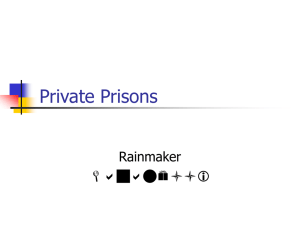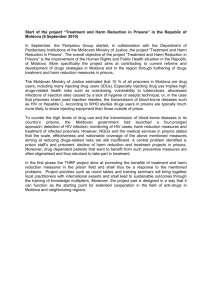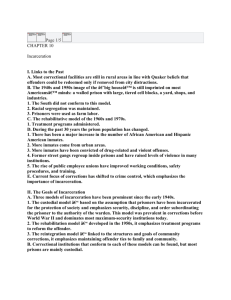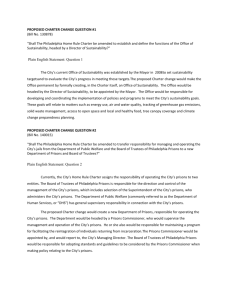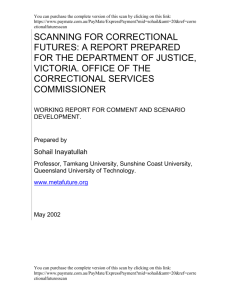Proactive Policing vs. Reactive Policing in Corrections
advertisement
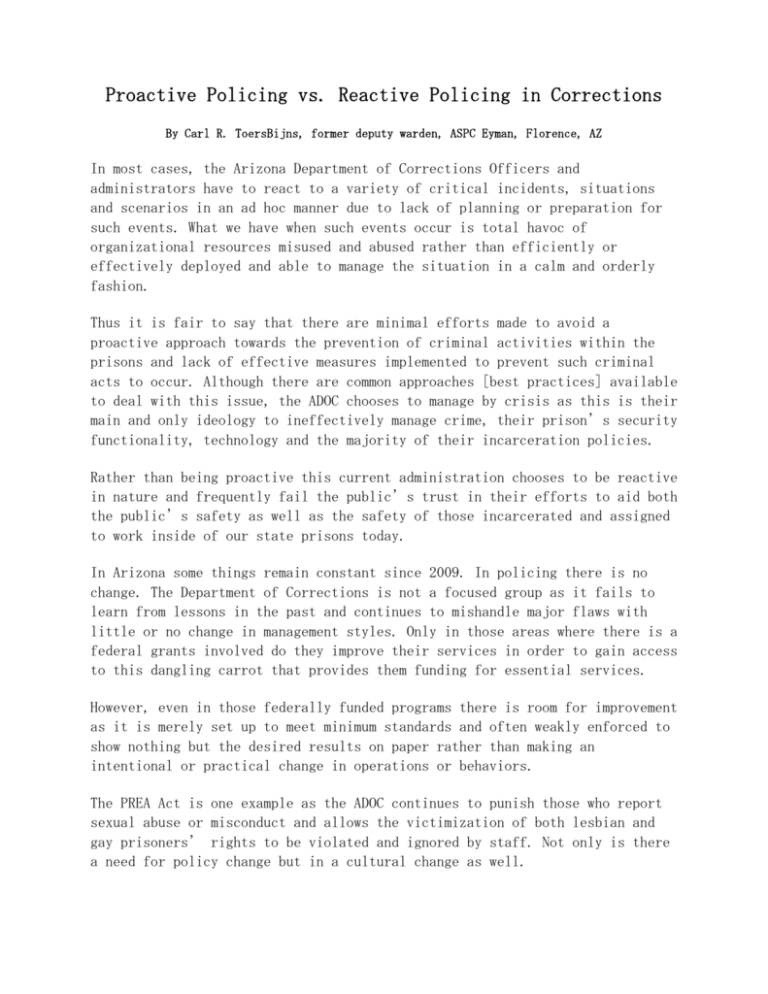
Proactive Policing vs. Reactive Policing in Corrections By Carl R. ToersBijns, former deputy warden, ASPC Eyman, Florence, AZ In most cases, the Arizona Department of Corrections Officers and administrators have to react to a variety of critical incidents, situations and scenarios in an ad hoc manner due to lack of planning or preparation for such events. What we have when such events occur is total havoc of organizational resources misused and abused rather than efficiently or effectively deployed and able to manage the situation in a calm and orderly fashion. Thus it is fair to say that there are minimal efforts made to avoid a proactive approach towards the prevention of criminal activities within the prisons and lack of effective measures implemented to prevent such criminal acts to occur. Although there are common approaches [best practices] available to deal with this issue, the ADOC chooses to manage by crisis as this is their main and only ideology to ineffectively manage crime, their prison’s security functionality, technology and the majority of their incarceration policies. Rather than being proactive this current administration chooses to be reactive in nature and frequently fail the public’s trust in their efforts to aid both the public’s safety as well as the safety of those incarcerated and assigned to work inside of our state prisons today. In Arizona some things remain constant since 2009. In policing there is no change. The Department of Corrections is not a focused group as it fails to learn from lessons in the past and continues to mishandle major flaws with little or no change in management styles. Only in those areas where there is a federal grants involved do they improve their services in order to gain access to this dangling carrot that provides them funding for essential services. However, even in those federally funded programs there is room for improvement as it is merely set up to meet minimum standards and often weakly enforced to show nothing but the desired results on paper rather than making an intentional or practical change in operations or behaviors. The PREA Act is one example as the ADOC continues to punish those who report sexual abuse or misconduct and allows the victimization of both lesbian and gay prisoners’ rights to be violated and ignored by staff. Not only is there a need for policy change but in a cultural change as well. Another example of mismanagement is the manner the ADOC handles the severely mentally ill persons. It allows and condones a high number of suicides, self mutilations and death inside its prisons with no effective counter plan to intervene, reduce or prevent these events as it ignores the problem rather than handling it with today’s technology and methodology used by other states to create safer and more orderly therapeutic environments for those needing stability and programming for mental health treatment. This agency has been unsuccessful particularly in learning and adapting to new correctional techniques and behaviors. Instead of focusing on a reduction in prison population, they plan for expansion of beds. Instead of hitting the bricks for prisons corrections, they ask for more prisons to be built. Talking to people working inside these prisons, it is obvious that there is no priority in reducing spending and reducing the violence that is occurring on a daily basis by inmate gangs that are running open yards and charging taxes and other levies to those that are doing their time but have to either join a gang or pay to coexist on one of these yards. To refuse payment is a sentence for excessive physical punishment that often results in hospitalization or medical treatment for injuries often not reported for fear of relations. Policies haven’t changed and it’s likely they won’t until the death count exceed those tolerable limits set by the directors in Phoenix as manageable and normal. In the meantime, drugs rule the yards and run amuck. Assaults are increasingly common and more severe as correctional officers risk being harmed or killed by those that enforce the gang rules inside our prisons. This agency could be more successful if it adopted the guidelines of the S.A.R.A model that is considered to be a process that is workable and logical when applied to problem solving measures and it works. The main obstacle of this concept is the resistance by those who refuse to “buy in” on the concept and insist on doing it the old way of lessons learned and taking reactive measures to avoid dealing with it again but not taking into consideration other variances of other major problems that may occur. The ADOC needs to implement a proverbial buy in order for it to work. Without this embracement of change policies will remain ineffective and antiquated in content and unable to provide guidance to those working the line and keeping the peace. The bottom line is if you want the ADOC to be successful, the department has to implement this model in all their prisons and allow the process to exist, grow and expand to the levels it can reach if fully integrated into the policy making process that is lacking the right elements to fulfill effective policy making today. The SARA Model A commonly used problem-solving method is the SARA model (Scanning, Analysis, Response and Assessment). The SARA model contains the following elements: Scanning: Identifying recurring problems of concern to the public and the agency. Identifying the consequences of the problem for the prisons and the agency. Prioritizing those problems. Developing broad goals. Confirming that the problems exist. Determining how frequently the problem occurs and how long it has been taking place. Selecting problems for closer examination. Analysis: Identifying and understanding the events and conditions that precede and accompany the problem. Identifying relevant data to be collected. Researching what is known about the problem type. Taking inventory of how the problem is currently addressed and the strengths and limitations of the current response. Narrowing the scope of the problem as specifically as possible. Identifying a variety of resources that may be of assistance in developing a deeper understanding of the problem. Developing a working hypothesis about why the problem is occurring. Response: Brainstorming for new interventions. Searching for what other communities with similar problems have done. Choosing among the alternative interventions. Outlining a response plan and identifying responsible parties. Stating the specific objectives for the response plan. Carrying out the planned activities. Assessment: Determining whether the plan was implemented (a process evaluation). Collecting pre– and post–response qualitative and quantitative data. Determining whether broad goals and specific objectives were attained. Identifying any new strategies needed to augment the original plan. Conducting ongoing assessment to ensure continued effectiveness. November 18, 2012
